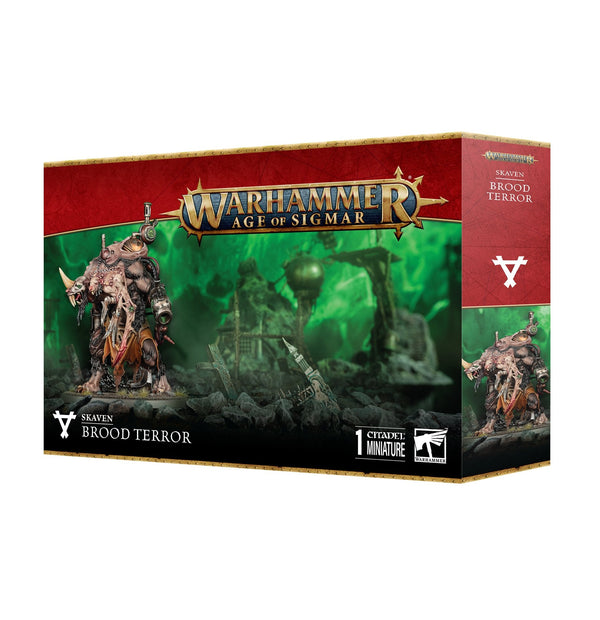Recommended Paint
Product title
Vendor
£19.99 | £24.99
Product title
Vendor
£19.99 | £24.99
Product title
Vendor
£19.99 | £24.99
Product title
Vendor
£19.99 | £24.99
Product title
Vendor
£19.99 | £24.99
Product title
Vendor
£19.99 | £24.99
Product title
Vendor
£19.99 | £24.99
Product title
Vendor
£19.99 | £24.99
Product title
Vendor
£19.99 | £24.99
Product title
Vendor
£19.99 | £24.99
Product title
Vendor
£19.99 | £24.99
Product title
Vendor
£19.99 | £24.99
Product title
Vendor
£19.99 | £24.99
Product title
Vendor
£19.99 | £24.99
Product title
Vendor
£19.99 | £24.99
Product title
Vendor
£19.99 | £24.99
Key Features:
- A horrifying Skaven brute to crash through your enemy's front lines
- Literally combines a Master Moulder with one of their largest, most destructive creations
- Roast your foes with warpflame, then finish them off with blades, chains, claws, and teeth
Brood Terrors are among the most hideous aberrations of the Clans Moulder. These twin-headed titans lurch between bouts of low cunning and bestial rage. Surrounded by clouds of mutagenic fog, they lumber forth with an ungainly but definite purpose. Hooked flails drag their prey closer, bathing them in warpflame or vivisecting them with swift knife arms.
This multipart plastic kit builds a massive Brood Terror, a hulking beast to bolster the front lines of your Skaven army. Clearly the handiwork of the Clans Moulder, these creatures are a mess of limbs and integrated machines, all claws, blades, chains, and gnashing teeth. Soften up your targets with bouts of warpflame, then close in to finish the job in a gory frenzy. Tremendously hard to kill, these creatures are sure to put a dent in your opponent's plans.
Product title
Vendor
£19.99 | £24.99
Product title
Vendor
£19.99 | £24.99
Product title
Vendor
£19.99 | £24.99
Product title
Vendor


